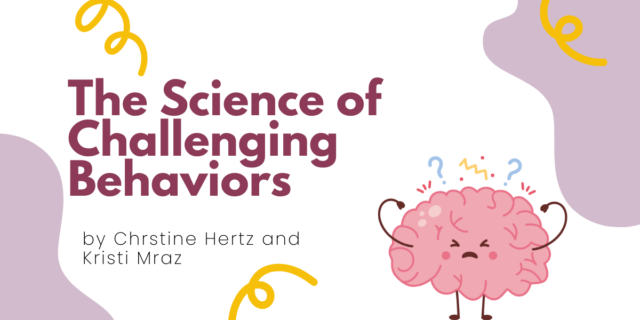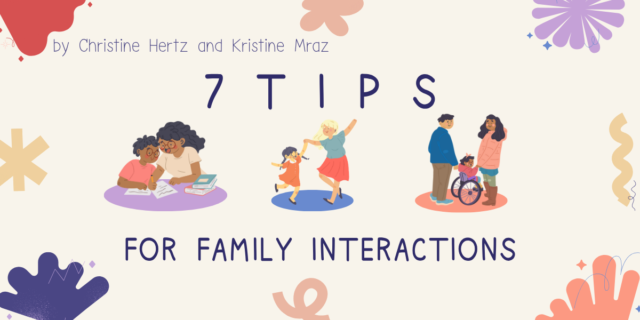
This month, we look inward to understand how we ourselves develop empathy, so we can integrate experiences that foster empathy in students, as well as lead us toward more inclusive decision-making in our schools.
♦ ♦ ♦ ♦
by Jaclyn Karabinas
Connect
Think about a time when a student showed opposition to something you said, did, assigned, or asked. Do you remember your first reaction?
![]() Consider
Consider
In our first PLC Series post this month, The Work of Finding Empathy, we investigated this question: In what ways do you make an effort to get proximate to the human story to foster your own sense of empathy that will impact your decision making as an educator?
In that post, (and please allow yourself time to revisit the sequence of content and thinking offered there), we focused primarily on the practice of finding empathy ourselves, placing ourselves in moments of discomfort and silence, and learning to experience this work as adults before we expect it of students.
In this post, the same Guiding Question will remain as we dig deeper into the latter portion, uncovering how our own sense of empathy will impact our decision making as educators.
![]() Educate
Educate
Listen to (or read the transcript) of this podcast with Cornelius Minor where he tells a story about his discovery of the difference between “can’t learn” and “won’t learn.” Be sure to jot down anything you notice about Cornelius’ realizations about the impact of understanding a student’s story on his decision making.
![]() Reflect
Reflect
We have conversations with students all of the time. Yet, it’s when we not only listen, but truly place ourselves in their shoes and find the empathy, that we can then honestly ask ourselves: Is a practice in my school excluding this child from success by nature of his story? Think back to the memory you conjured at the beginning of this piece. Do you remember getting in that child’s shoes to understand their point of view, including what they bring to such a situation?
![]()
Practice
Find some people to dig into a student scenario with—your team, colleagues, or professional learning network on social media—and take some time to tell the story of this student with each other.
In his podcast, we heard Cornelius say that his “vision of success was in direct competition with his [student’s] love for his brothers.” What can you learn about these students? Was there a source of “institutional discomfort”? What practices might have created a barrier to their success based on their story?
![]() Extend
Extend
In our first post this month, we watched first three minutes to a video blog with A Mindset for Learning and Kids 1st from Day One co-authors Kristine Mraz and Christine Hertz. Kristine provided an amazing example of how our possible negative response to the class stopping everything because it began to snow might shift if we stopped to remember being 5 in such a moment.
As you watch the rest of the video, take note of Christine’s thoughts on how this practice translates into building our classroom culture from 3:06-4:18, and then how Kristi extends infuses the role of empathy in the automaticity of our decision making from 4:18 to the end.
![]() Refine
Refine
In order to make empathy a part of classroom culture, we must model that behavior not only through our words but our actions. Saying we see where someone is coming from is not enough. Acting and showing up for that person, often publicly, is the next step.
In this piece by Jim Dillon, we explore his question: Can we even teach empathy? As you read and jot your thinking from his article, give yourself some time to synthesize. What do you now know to be true about the practice of being empathetic? What does this need to look like in your life and ultimately, your classroom?
![]() Act
Act
Keep pushing your learning in these practices and learn to do this work. What does this feel like and look like in your personal and professional life?
Read this story and series of eight questions for reflection from Heinemann Fellow Tricia Ebarvia in her piece, “How Inclusive is Your Classroom Really?” Use her questioning process to find your next place of action.
Tricia writes, “When I first started teaching, my assimilationist tendencies pervaded my teaching too. I didn’t understand that too often to assimilate meant to erase.”
This work—as hard as it may be—can be the difference between being seen or feeling erased.
>>>For Further Reading:
- PLC Series: The Work of Finding Empathy (March 2018)
- Heinemann Podcast: Sara Ahmed: Being the Change, a Story
- PLC Series: Our Responsibility to Strive for Social Justice (September 2017)
- PLC Series: Challenge Belief Systems, Align Practices (January 2018)
- “There is no diverse book.” by Chad Everett


